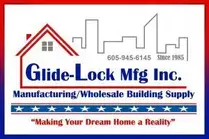You must take the time to do it right when you’re looking to install kitchen cabinets. That means researching the right materials for the job and correctly installing kitchen cabinets. Below you will learn some of the best ways to install kitchen cabinets in your home right away.
- Layout your kitchen
Choosing a proper kitchen layout is important in making the most of your space. A good kitchen layout should be functional and look good. You may want to consult a kitchen designer to ensure your dream kitchen becomes a reality. The kitchen triangle is a useful guideline for deciding on a kitchen layout. It consists of three main appliances and three key work zones. These areas help to ensure ergonomic movement throughout the kitchen.
There are many kitchen layouts to choose from. Each one has its own set of advantages and disadvantages. You can choose from a classic kitchen layout, a modern layout, or a quirky layout. You can also opt for a bespoke kitchen design. This is more expensive, but it can add a touch of uniqueness to your home. A kitchen island is a great way to make the most of a limited space. The key is to make sure that you can easily get access to your major appliances.
- Test the level of your Kitchen cabinets
Whether you are planning to replace old cabinets or install new ones, it is important to test the level of your kitchen cabinets before installing them. Failure to do so can cause problems with the installation. This article will tell you how to do this properly.
- The first step is to use a stud finder to locate studs in the wall. Then, draw a level line along the wall. This will act as a guide for the hanging of cabinets.
- Once you have marked the studs, it is time to measure your cabinets. You should measure the height of the cabinets, both the base and the upper. This will allow you to determine the distance between the base cabinets and the base of the upper cabinets.
- The next step is to place shims under your cabinets. This will level the cabinet so it will plumb against the wall. Once you are sure that the cabinet is level, you can place it on the studs. Then, you can attach the cabinet to the studs with screws.
. Fill gaps after installation
Whether installing kitchen cabinets or remodeling your existing ones, you may need to fill gaps. Several types of fillers are available, and the type you need will depend on the size of the gaps. A simple wood filler can be used if you have a small gap. This will fill the gap and make it look seamless. However, you may need a more durable filler if you have a large gap. You can also use expandable foam to fill the gap. This will reduce the amount of caulking that is required.
For larger gaps, you can use filler strips. These strips are attached to the cabinet frame and doors. They come in various sizes, some being as wide as three inches. The strips are then attached with wood glue or silicone. These strips are designed to be installed without removing the cabinet. Before installing a gap filler, you should thoroughly clean the cabinet and wall. Dust, debris, and painter’s tape should be removed from the area. You should then ensure that the caulk does not leak into the woodwork.
- Find high spots for your Kitchen cabinets
Identifying high spots for your kitchen cabinets is a key component to a successful remodel. If you are not careful, you can easily end up with cabinets that do not fit. This means you’ll have to take extra time to adjust them. One of the most helpful ways to identify high spots for your cabinets is by using a laser level. This level will provide a great reference line throughout the room. It can also help you find a high spot on the floor.
Another option is to use a tape measure. Then hold the 0 ends of the measuring device on the floor and move it around the room. The shortest measurement will be the high spot. Once you’ve identified the high spot, you can start to mark it. You can also use a stud finder to mark the location of the studs on the wall. A bubble level can be used to check for wall bowing. You can also shim the cabinets to compensate for the uneven surfaces.
